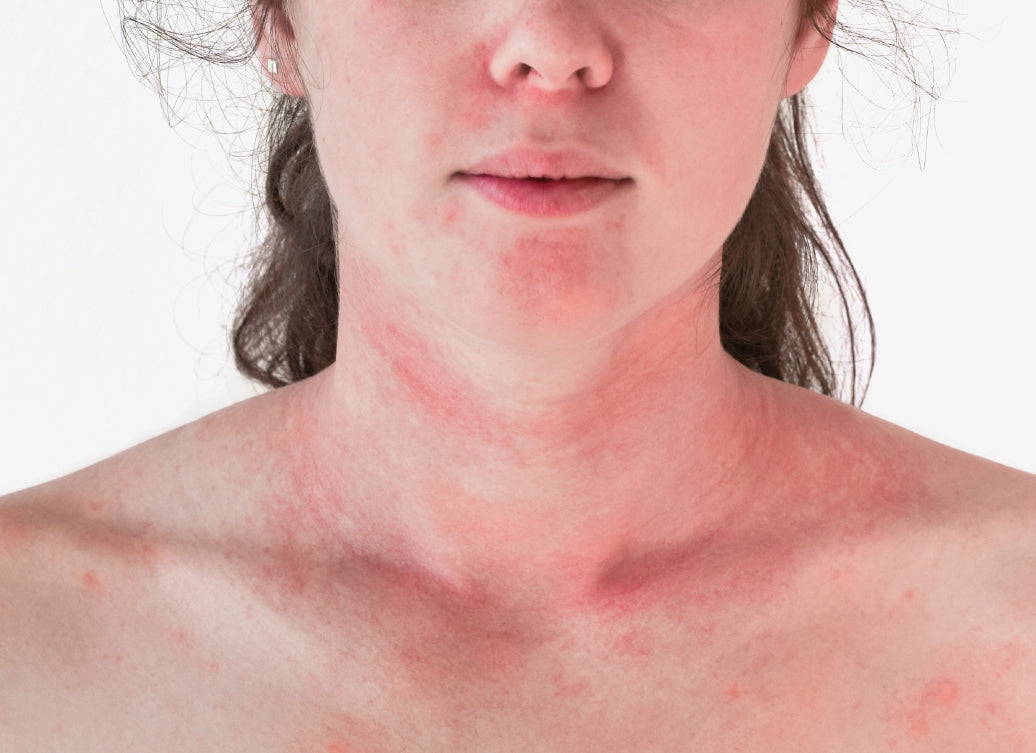TSW can be a long process, sometimes with frustratingly slow progress and disappointing waves of flares. In this blog we look at how long those flare-ups can last.
What is TSW?
TSW stands for topical steroid withdrawal. This is a process of recovering from the effects of topical corticosteroids, usually after using steroid creams to manage the symptoms of eczema or other skin conditions. Although it’s been long understood that using steroids on the skin can result in side-effects, with the skin, the adrenal system and the immune system all being affected by the way steroids dampen the body’s inflammatory response, what happens after someone stops using topical steroid addiction has only relatively recently been documented.
Also known as topical steroid withdrawal syndrome, TSW refers to the collection of symptoms that people who have stopped using steroids tend to experience. TSW isn’t the same as eczema: it has different characteristics, different symptoms, and is a process rather than a chronic condition.
TSW healing isn’t linear
The first thing to know about the TSW is that it affects everyone differently, although there are symptoms that the majority of people going through the recovery process experience to greater or lesser extent. But unfortunately, it’s impossible to predict how long the process will last, how many flares someone will experience, or how linear their healing will be.
For the majority of people going through TSW, progress is gradual and comes in waves, with ongoing progress punctuated with severe flare-ups as well as periods of clearer, usually drier/flakier skin.
What is a TSW flare?
In the context of TSW, a flare means a period of time when skin is most severely and dramatically affected by the symptoms of TSW. During a flare the skin can feel hot, sore, intensely itchy, raw and sensitive. It might crack, swell up or ooze fluid. It can be a very painful time both physically and psychologically; it can be extremely dispiriting to experience another flare when you thought you were almost healed from the effects of topical steroids.
How long might a flare last?
Unfortunately, it’s impossible to say how long this period of worsening symptoms is likely to last; for some flares and some people, it might be just a few days of severe itching and inflammation; for others a flare can last weeks or months until the skin calms down. The positive news is that although a flare might seem like a set back, for most people TSW is a series of cycles rather than linear progress, and flares seem to be a normal part of the process.
Flares do end eventually, and tend to be followed by a period of time when the skin is dry and flaky. Although it might feel like two steps forward, one step back, progress is likely to be happening with each flare cycle.
Time is the great healer
What’s generally agreed on is that time is the greatest healer. There are things you can do to make yourself more comfortable during a flare up (see below) but time and support is what you need to heal, both during a flare and as you’re going through the whole TSW process.
Coping with a TSW flare
What works for one person may not suit another, because highly sensitive skin tends to react individually to different ingredients or techniques, but here are some ideas about getting through the flares and coping with the severest symptoms of TSW.
-
Find support
Allow yourself time and space for unexpected flares: you may need to rearrange classes, take time off work, or find childcare for your children while you’re experiencing the most debilitating symptoms
-
Ask your community
Ask for tips from your online community, on social media or online (try ITSAN, Scratch That or #tsw hash tags on Instagram); by far the best way to learn what has helped others in the same position is to ask them.
-
Look after your skin
Use extra gentle cleansers and moisturisers; steer clear of perfumes, alcohol, harsh preservatives or unnecessary ingredients. You may want to bathe in cooler water than normal and for shorter periods of time. Some people find adding oil, oats or mineral salts to the bath can help calm itchy skin.
-
Dress for comfort
The best clothes for severe flares are light, cool, comfortable and made of cotton or bamboo. They’ll need to be washed often in hypoallergenic laundry powder or soap nuts; if you’re using detergent it can be worth putting them through a second cycle of just water to get rid of any residue.
You can find more information on Topical Steroid Withdrawal on our Info Hub, including Top 8 Tops for Keeping Calm During Topical Steroid Withdrawal by guest writer Eden Brown.
Recommended products:
Balmonds Skin Salvation
with hemp and beeswax
Balmonds Natural Shampoo & Body Wash
with calendula & chamomile
